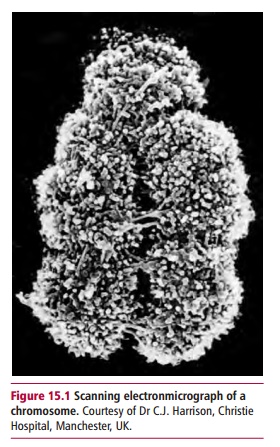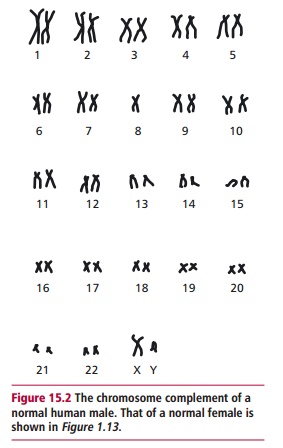Chapter: Biology of Disease: Genetic Diseases
Genetic Diseases
GENETIC DISEASES
INTRODUCTION
Genes are the
fundamental units of heredity and encode specific functionalproducts, such as
RNA molecules and polypeptides. They are encoded by sequences of bases in DNA
molecules and are found at particular positions in chromosomes in the nucleus
and also in the relatively small circular DNA molecules in the mitochondria.
Only 37 of the approximately 22 000 human genes occur in mitochondria although
mutations of these may become clinically significant as described. The genes
constitute the blueprint or the set of instructions which affects hereditary
characteristics, for example hair and eye color, height and the susceptibility
to certain diseases.
When a cell divides the genetic information needs to
be replicated accurately so that these instructions pass on to the daughter
cells. When changes occur in the base sequence of DNA, either as a result of
incorrect replication or from random changes caused by physical or chemical
agents, then the instructions become corrupted. This is a mutation, and may eventually lead to disease because the cell is
unable to make, for example, a particular enzyme, hormone, transporter or
structural protein.
Chromosomes have a complex structure (Figure 15.1). Each is comprised of a
single double-stranded DNA molecule associated with numerous proteins.

In general, chromosomes occur in matching or
homologous pairs, with each member of a pair containing alleles or different forms of the same gene, which are found at the
same loci (singular locus) in each member of the pairs. Normal human somatic
(body) cells contain 23 pairs of chromosomes and are said to be diploid (2N). The 46 chromosomes in
diploid cells comprise 22 homologous pairs of autosomes (nonsex chromosomes) and one pair of sex chromosomes; XX
in females and XY in males (Figure 15.2;
see also Figure1.13). Oocytes and
spermatozoa have half the diploid number and are said tobe haploid (N); oocytes can only contain an X chromosome but sperm can
have an X or a Y chromosome.

Related Topics